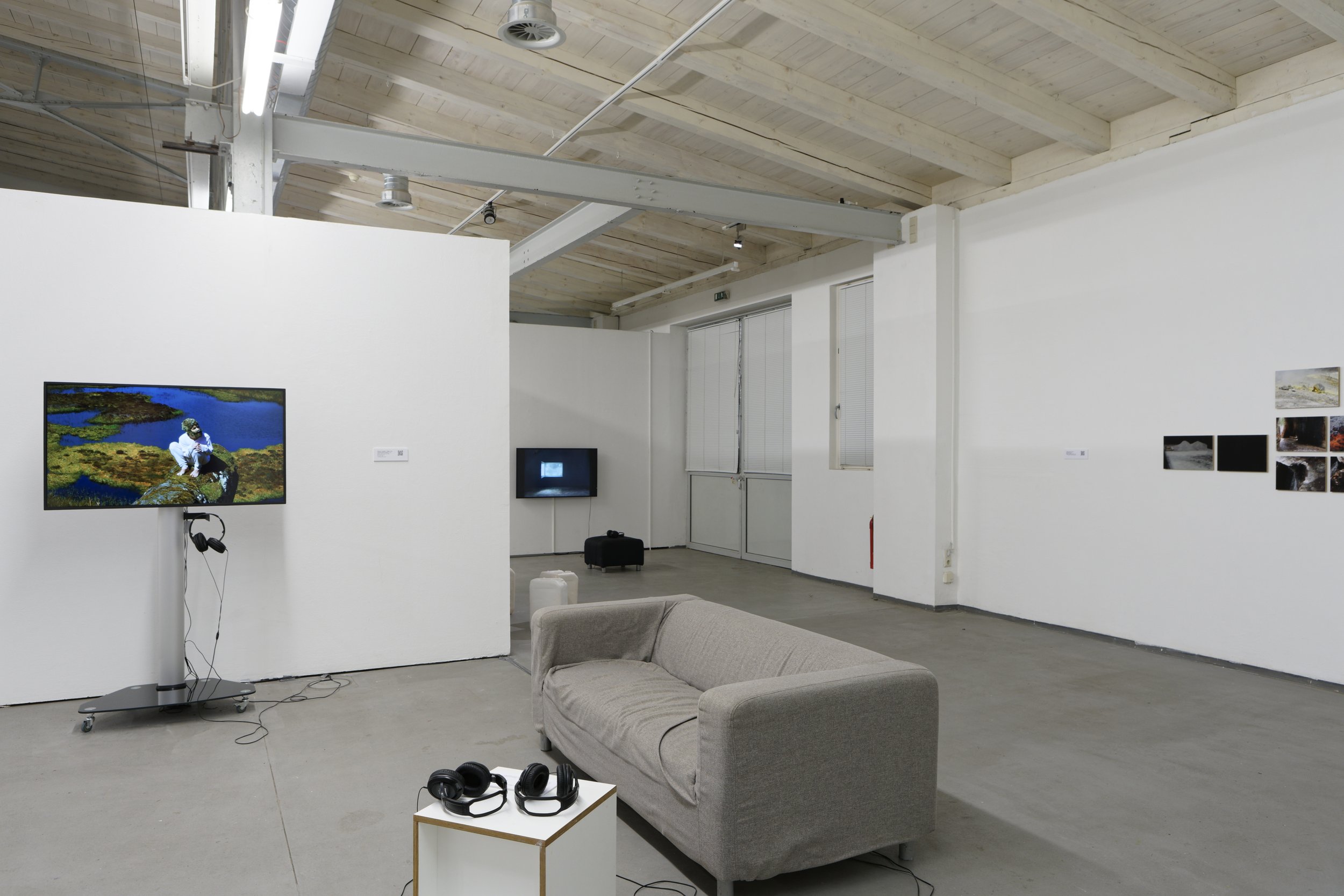








Videocity Visits Motorenhalle – Utopia Today
21.10.2023 – 25.02.2024, Wed-Fri: 15:00 – 19:00, Sat-Sun: 14:00 – 18:00
Motorenhalle, Projektzentrum für zeitgenössische Kunst Dresden, Adlergasse 14, 01067 Dresden, Deutschland
Ticket price: 3 / 4 €, free on Fridays
Exhibition tours 03.11., 08.12., 19.1.2024, 03.02., starting at 16:00
-
Something with hope
In terms of linguistic history, when we hope, we bounce up and down in joyful anticipation.
If you were to strike the bell of hope, you would hear a sound of many notes, more like an organ, an orchestra. Individual and collective, local and global, immanent and transcendent, mutually reinforcing and exclusive and even more expected would resonate.
How do artists in different genres currently deal with hopes? How do they devote themselves to individual and collective hopes in an art that today is largely removed from the idea of proclaiming valid truths, is oriented towards this side and is often socially critical? Could critical habitus go together with optimistic hopefulness?
So let us try to think in a synaesthetic sense and bring together anything different artistic perceptions, with hope or its absence, with its chimeras of wishful dream or illusion.
Hope is multifaceted. Objects of hope of different people, groups, milieus, even entire societies can be completely contradictory. Since we will not be able to agree on a common hope, we outline the field of content somewhat openly with "something". Perhaps this is an expression of the fact that we cannot be entirely sure of daring to hope. Hope in contemporary art tends to be related to current political and cultural issues in a changing society. Immanent is often the idea that hope can be a drive for people in solving current problems. Here, too, it is about a better future. One that, unlike utopias, seems attainable. But one that is not meant to be fulfilled automaticly but above all in this world.
If we talk to each other about our our individual hopes, they become socially tangible. We see that they are not always unique. All our hopes relate to something and go beyond ourselves. Wishes for a future - small or even great utopias. At the same time, hoping is often accompanied by dreams, crises, fears, courage and also doubt. Radically speaking, hope means that something thought good should emerge, without currently knowing what this might actually be. In other words, a glimmer or chance of something that is not yet - a "not yet" reality.
As the philosopher of hope, Ernst Bloch postulated that art can bring this "not yet" reality(ies) to light. Works of art can be the link to the fact that something better is possible and at the same time also a warning to accept the existing as final. Bloch saw in art a utopian moment and a chance to actively change the world in a positive way.
Works of art, one could therefore claim, always carry something with hope.
In the project, we would therefore like to look at various connections between art and hope. But who has access to art? What are the respective ideas of change in society. These questions are too broad for a single project. However, it is important for us to think about and ask them in the process of shaping the project. If one currently thinks of the concept of hope in the context of the art system, the possibility or danger of the failure of hope is likely to be a central idea. But not only despair as the complete absence of hope, also pipe dreams or illusion as unrealisable hopes belong to its sphere of action.
-
Irgendwas mit Hoffnung
Wenn wir hoffen, hüpfen wir sprachgeschichtlich gesehen in freudiger Erwartung auf und nieder.
Hoffnung scheint gerade wieder in der Gegenwart sehr notwendig. Oftmals ist sie nur ein Schimmer. Tastende Bewegungen, Versuche, Verhältnisse zu bessern. Ernst Bloch folgend ein Prinzip, eine Utopie positiver Entwicklung, ein Träumen nach Vorwärts. In Ausstellung, Veranstaltungen, Workshops und Diskussionen sind Statements und Arbeiten verschiedener Genres von Künstler:innen aus mehreren Ländern erleben. Wie stehen darin Hoffnung, trügerische Zuversicht, utopische wie dystopische Ausblicke und andere scheinbar widersprüchliche Aspekte zueinander. Ein Laboratorium ästhetischer Formen wie auch inhaltlicher Aspekte um individuelles und gesellschaftliches Hoffen.
Neu ist das alles nicht. In der christlich geprägten europäischen Kunst war und ist Hoffnung ein zentrales Thema. Die Verkündigung, dass Maria guter Hoffnung sei, die Hoffnung auf Vergebung, auf die Parusie, auf eigene Auferstehung, um nur einige Felder zu nennen. Auch in anderen Kulturen spielten und spielen jenseitige Hoffnungserwartungen oft eine große Rolle.
Ernst Bloch, der Philosoph der Hoffnung, sah in der Kunst Chancen dafür "Noch-Nicht" Realität(en) zum Vorschein zu bringen. Kunstwerke können der Link dazu sein, das Besseres möglich ist und gleichzeitig auch Warnung, das Vorhandene als endgültig hinzunehmen. Bloch sah dies in verschieden Genres der damaligen Kunst – Literatur, Musik, Theater, Malerei, Bildhauerei.
Versuchen wir also, im synästhetischen Sinne und intrinsisch hoffnungsvoll verschiedene künstlerische Wahrnehmungen, Blicke, irgendetwas mit Hoffnung oder deren Abwesenheit, mit deren Chimären Wunschtraum oder Illusion zusammenzudenken und zu -bringen. Welchen Themen wenden sich Künstler:innen gegenwärtig hoffnungsvoll zu? Ein Vorhaben mit Hoffnung.
Video programme - in cooperation with Videocity:
Artists: Tahsin Akhtar (IN), Mohamed Badarne (PS/DE), Edlyn Castellanos (US/MX), Youngjoo Cho (KR), Copa & Sordes (CH/DE), Zoya Laktionova (UA), Johanna Reich (DE), Daisy Riley (GB), Paulina Ruiz Carballido (MX)
Curators: Andre Domesle (Heilbronn), Polina Chizhova (UK) & the Videocity team.
